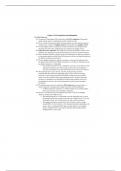Class notes
Biol 140 DNA Replication and Manipulation Notes
- Course
- JMU Bio 140
- Institution
- James Madison University
DNA Replication and Manipulation notes for Bio 140. *Essential!! *Contains vital information,key concepts and more.... *For you!!
[Show more]



